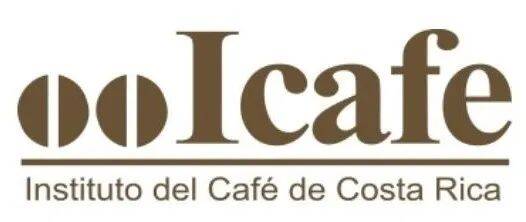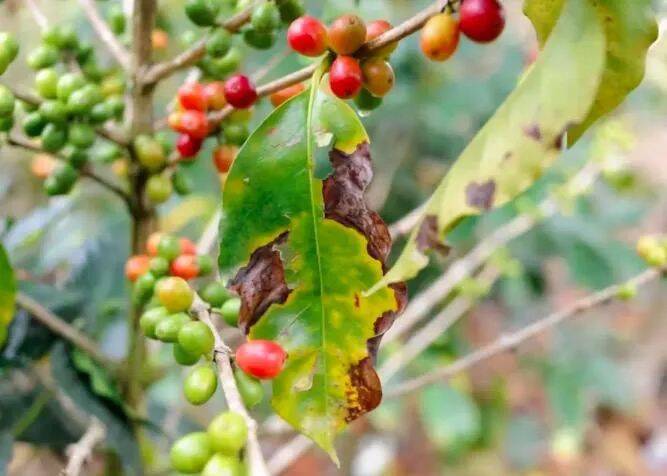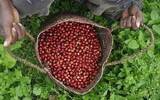Costa Rican Coffee Research Institute ICAFE, Coffee Variety, Carnett Manor Mozart Coffee introduction
Costa Rica, located in Central America, is the 14th largest coffee producer in the world. Although it has a small land area, it has vast forests and fertile volcanic soil, making it a very suitable place for coffee cultivation.
Coffee was grown in Costa Rica as early as the early 19th century. And the government is very supportive of coffee cultivation. In 1933, the Coffee Defense Agency (Institute for the Defence of Coffee) was established to protect small coffee farmers from exploitation. In 1948, the organization became the Costa Rican Coffee Institute (Instituto del Cafe de Costa Rica referred to as ICAFE) and is still in operation today. Later, experimental farms were set up and Costa Rican coffee was promoted around the world.

The coffee institute, founded in 1933, can be called the president of Costa Rica. It was established to promote a unique and fair mode of production among national producers, welfare, dryers and exporters. Support the production, processing, export and sale of Costa Rican coffee. And promote domestic and international consumption of Costa Rican coffee. There is also research and development of agricultural and industrial technologies. Finally, to approve a fair minimum price for agriculture, the price of coffee must be paid to producers and a certain welfare mechanism must be provided.
Moreover, mainly schools and leading services to promote coffee activities, participate in and ensure the quality and sustainability of Costa Rican coffee through innovation and traceability programmes. The agency has been established for 91 years and has contributed a lot to the development of the coffee industry in Costa Rica. Its most important event is the research and development of varieties.

The Costa Rican Coffee Research Institute has partnered with Starbucks, a well-known multinational chain coffee brand, to study the resistance of several coffee varieties to leaf rust, anthracnose and "corns", in order to identify varieties with strong disease resistance and climate adaptability, with the aim of improving the output and competitiveness of Costa Rican coffee and promoting the sustainable development of the coffee growing industry.
In addition, there is the Venecia coffee variety, which is a natural Kaddura mutant in the San Carlos San Carlos region of the Central Valley of Costa Rica. It is also a new Kaddura coffee breeding released by the Costa Rican Coffee Research Center (ICAFE). This variety has the advantages of short plant, high yield, strong rain resistance and disease resistance. In 1991, ICAFE began to study and screen this variety of coffee beans in Turrialba, Coto Brus and Perez Zeledon regions of Costa Rica. After years of research, Venicia varieties in Perez Zeledon region not only have richer flavor, but also have better yield and resistance to diseases and insect pests.
Costa Rican coffee is famous not only because the country has a suitable place to grow coffee, but also thanks to the support of the government to set up a research institute and to promote Costa Rican coffee around the world. Of course, Qianjie also got a lot of coffee from Costa Rica, including Mozart, the musician series of Carnett Manor in the famous Tara Pearl region. This Mozart coffee bean is treated with raisin honey and boiled with the ratio of V60 jade 1 to 15, with responsible floral and fermented aromas on the palate, acidity like carambola and berries, as well as raisin-like sweetness, full and fragrant taste, and finally sucrose.
Important Notice :
前街咖啡 FrontStreet Coffee has moved to new addredd:
FrontStreet Coffee Address: 315,Donghua East Road,GuangZhou
Tel:020 38364473
- Prev

Coffee calorie assessment is on the rise, netizens: drink coffee so roll?!
▲ Click to follow | Daily boutique Coffee Culture Magazine Coffee Workshop is approaching, when you think of going back to your hometown to meet relatives and friends, many friends should start to worry about being cue, "Ouch seems to be fat", so they start to work hard to lose weight before the festival, control calorie intake, after all, wear it beautifully.
- Next

Kenya has invested 6 billion dollars to support coffee cultivation, hoping to increase production and work with the Rainforest Alliance to certify compliance with EU regulations.
Currently, Kenya produces 51000 metric tons of coffee a year, but the Kenyan government hopes to increase production through a number of strategic measures. It is hoped that an increase of 49000 metric tons in coffee production will meet global coffee demand and increase the country's international influence and economic strength. Recently, the Kenyan government
Related
- Is espresso stored overnight in the refrigerator harmful to your body? Is frozen coffee better than freshly ground coffee?
- What parameters and proportions of water temperature should be used to grind and brew fresh coffee beans? Why can't I drink freshly roasted coffee right away?
- Customers have "changed" Manner's new products! Shop assistant: Please don't mess around!
- Remove sockets in customer areas at Starbucks stores?! Netizen: I won't go if I really tear it down
- What is the difference between the taste steps of sun-dried coffee and washed coffee? Why is sun-cured coffee sweeter and washed coffee sour?
- The recipe for salty grapefruit dirty is revealed! Coffee Festival salty grapefruit dirty coffee making materials parameters ratio milk share!
- How about the flavor of Sunlight 74158 at Sidamo Banshaha Mathieu Processing Factory in Ethiopia? 74158 Share the proportion of coffee brewing parameters!
- What effect does Italian American coffee with filter paper have? Will coffee taste better if it is put on filter paper at the bottom of the powder bowl?
- What is the color difference in coffee beans? What are the characteristics of honey processed coffee beans? Why are the anaerobically treated coffee beans uneven in color?
- How does novice Xiaobai quickly get started and make coffee? Newbies learn to make coffee by hand and share the specific steps and process process!

